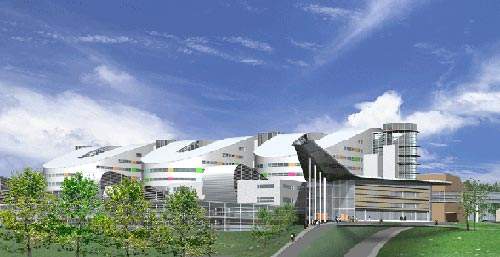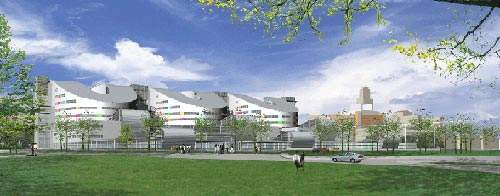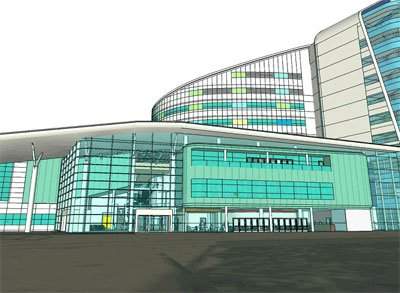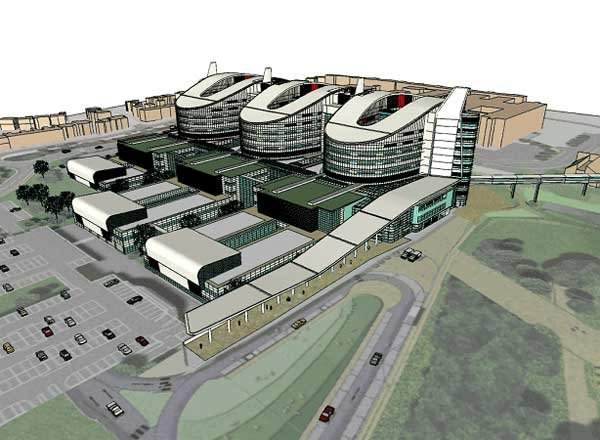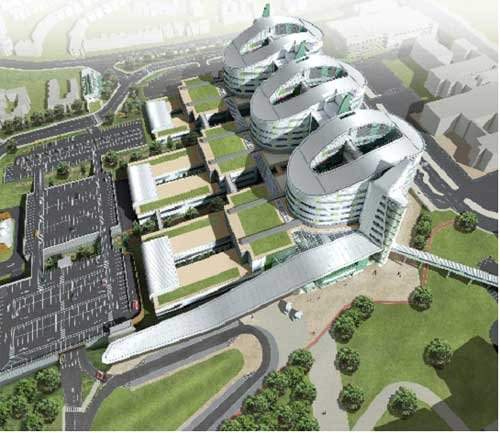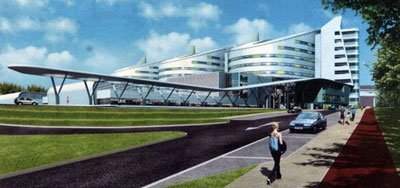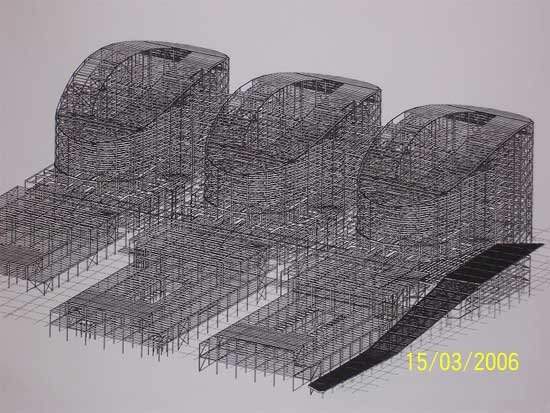The Birmingham New Hospitals PFI project received the final go ahead with financial closure completed in June 2006.
Pinsent Mason was able to advise and act on behalf of both the University Hospital Birmingham NHS Foundation Trust (UHBT) and Birmingham and Solihull Mental Health Trust (BSMT) in securing the finance.
The project, which is worth £545m, was named as Queen Elizabeth Hospital Birmingham in March 2009.
It was completed in April 2010. The mental health facilities, including the Queen Elizabeth Psychiatric Hospital for Birmingham and Solihull Mental Health Trust, opened in June 2008. The military ward of the Royal Centre for Defence Medicine moved into the new hospital in June 2010.
The services of the old hospital were shifted to the new facility in six moves which started in June 2010. The final move started in October 2011.
Birmingham’s New Hospitals PFI project buildings
The project included a new 1,213 bed hospital on the 50 acre site of the old Queen Elizabeth Hospital in Edgbaston and also a new psychiatric facility on the campus (three locations) with a total of 137 beds, as well as a new 32 bed mental health unit at Showell Lane.
Two further units of 45 and 21 beds were developed away from the main site at Sparkhill and Stirchley so that services can be provided closer to the communities which they serve.
In total these hospitals cover some 170,000m². The super hospital can treat 21% more patients in its operational area, significantly lowering waiting times.
The new hospital was originally granted outline planning permission in January 2000 to be built as a replacement to the Queen Elizabeth and Selly Oak Hospitals.
The scheme was developed jointly by the UHBT and the BSMT in close liaison with the Ministry of Defence (MoD), University of Birmingham, Birmingham and The Black Country Strategic Health Authority and Birmingham City Council.
The project also involved construction of a new Royal Centre for Defence Medicine for the Ministry of Defence (all military medical training relocated here), clinical science and education facilities for the University of Birmingham, the involvement of a Foundation Trust, an innovative sharing arrangement for car parking revenues and the inclusion of an IT service.
Hospital contractors involved
In January 2004 UHBT and BSMT selected Consort Healthcare (Birmingham), a joint-venture between Balfour Beatty, The Royal Bank of Scotland and HSBC, as its preferred partner for the project, which is the largest in healthcare in the UK outside London. The project was funded by the issue of bonds guaranteed by FGIC UK.
Consort Healthcare won the bid along with the Building Design Partnership (BDP) working in conjunction with Nightingale Associates (a subsidiary of Tribal Architectural Practice).
BDP acted as the architect, landscape architect and acoustic consultant and was responsible for the design of the site master plan for the new hospital. Nightingale Associates were the architects for the additional mental health units.
Other members of the design team included civil and structural engineers White Young Green of Leeds, M&E (Mechanical and Electrical) engineers Hulley & Kirkwood of Glasgow and Couch Perry & Wilkes of Birmingham.
Construction was undertaken by a joint-venture comprising Balfour Beatty, Haden Young and AWG. Facilities Management was provided by Haden Building Management, a subsidiary of Balfour Beatty (long term service revenue could be £300m over the life-time of the concession). In excess of £30m was spent on site preparation for the new hospital.
In January 2006, a new state-of-the-art multistorey car park was opened on the site of the new hospital which cost £15m (the first of three being constructed). For the construction of the main hospital building already 225,000m³ of ground was excavated and 55,000m of concrete piles were poured for the foundations.
Hospital facilities
The total number of beds is 1,213. Of these 100 are for critical care, 108 for day surgery, 68 for acute assessment, 780 for in-patient acute beds, 12 private patient beds, 41 for renal dialysis, 15 burns unit beds and the remainder distributed between critical care, patient hotel and decant facilities. There are 30 operating theatres (23 in-patient and 7 day case surgery).
In addition there are specialist treatment units for angiography, CT scanners, ultrasound, MRI scanners and fluoroscopy.
There are dedicated visitor routes for added security and 44% of in-patient beds are single rooms and the remainder are four bed bays. All in-patient bedrooms have en-suite facilities.
Hospital design and architecture
The design of the super hospital is an interesting one. This includes three truncated pods, connected by walkways and set upon a two-storey base, containing the main patient features of the hospital.
The new mental health facilities consist of smaller units which are more conducive to providing sensitive patient care and, at the same time, offer a greater sense of sanctuary than the larger, traditional hospital they are replacing.
Three multistorey car parks accommodate around 4,000 vehicles and the University station – two stops from Birmingham New Street station on the Cross-City South line – form the basis of an integrated transport exchange for the entire complex.
All of this is placed into a spectacular backcloth of high-grade landscaping, archaeological preservation, natural habitats and a revitalised Bourn Brook corridor. The new hospital covers an area of 137,000m² and required 182,500 pieces of equipment to be procured for its opening.
The scheme also created world-class teaching, training and research centres. A pedestrian plaza, complete with public artworks, links the hospital campus with Birmingham University’s medical school making it easy to transfer the skills learnt in the classroom and lecture hall straight to the bedside.
Part of the scheme includes a new clinical science centre, in conjunction with the University of Birmingham, designed to interface closely with service outcomes and improvements.
The new hospital is the first built in Birmingham in more than 70 years and is expected to provide an architectural example for a new functional and adaptable facility. The concession for the new hospital is 35 years beginning after the completion of construction. Balfour Beatty contributed £23m of equity to the project.

